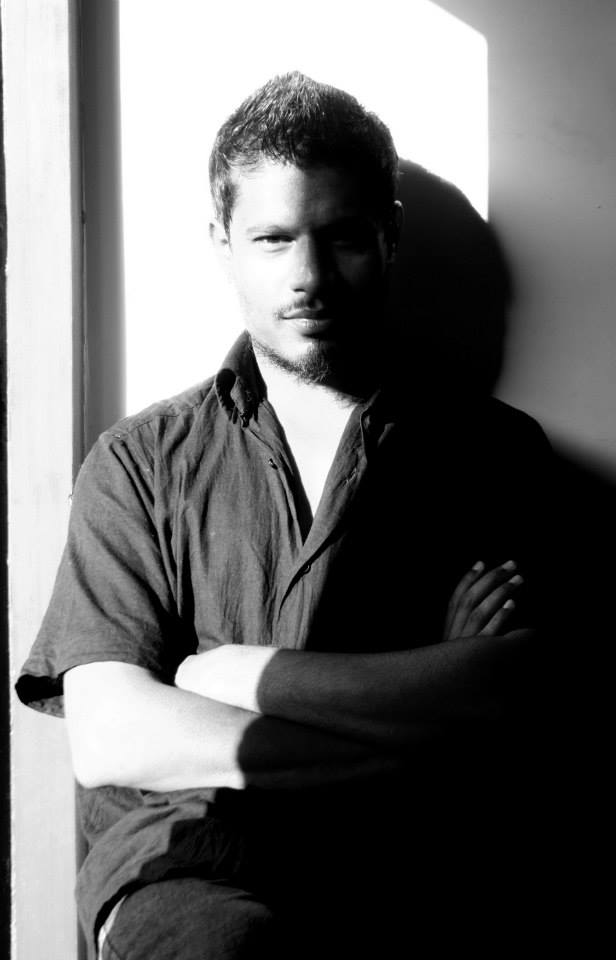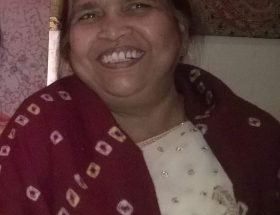Yogesh Maitreya
Pedagogy of the past
 I consider the post-1990 era as the age that tied up nationalism with Indian academia, not only through the syllabus but also through restructuring daily affairs of our student life. I was a student who entered school in 1990. From the days of my schooling, I can clearly enumerate now how the school day used to start: Gayatri Mantra followed by Saraswati Puja and then the Pledge. At the end, monotonously, we used to sing the national anthem. The contradictions used to start with the very start of the day. Obviously, I did not know the contradictions then but now they come to me as obstacles whenever I try to imagine the ideal-democratic-schooling for a country like India. The name of my first school itself contains the idea of ritualistic nomenclature: Bharatiya Gyan Mandir. Saraswati (Hindu goddess), being the symbol of education in Hinduism, was painted in a small circle on the left, below the board where the school name’s written. And we were taught at intervals: “Saraswati vidyechi devi aahe” (Saraswati is the goddess of education).
I consider the post-1990 era as the age that tied up nationalism with Indian academia, not only through the syllabus but also through restructuring daily affairs of our student life. I was a student who entered school in 1990. From the days of my schooling, I can clearly enumerate now how the school day used to start: Gayatri Mantra followed by Saraswati Puja and then the Pledge. At the end, monotonously, we used to sing the national anthem. The contradictions used to start with the very start of the day. Obviously, I did not know the contradictions then but now they come to me as obstacles whenever I try to imagine the ideal-democratic-schooling for a country like India. The name of my first school itself contains the idea of ritualistic nomenclature: Bharatiya Gyan Mandir. Saraswati (Hindu goddess), being the symbol of education in Hinduism, was painted in a small circle on the left, below the board where the school name’s written. And we were taught at intervals: “Saraswati vidyechi devi aahe” (Saraswati is the goddess of education).
In school, in the history books on Maharashtra until grade 7, Shivaji used to be the hero and Muslims were demonised. With this, we got the extremist image of Shivaji who fought with Muslims, but were not introduced to his secular, democratic personality. Likewise, there was no mention of the contribution of Muslims in the domains of literature, food, and culture in school books. Buddhism was buried history that never managed to appear in school books until then. In short school education, rather than instructing us with a balanced view of history, inculcating democratic values and secularism, injected the extremist notion of social realities in my head.
What was worse was that I never heard of Babasaheb Ambedkar during my entire schooling, at least not as an important national figure. Yes, Gandhi sprang up on my tongue whenever there were any discussions on the subjects of nation and national struggle. Much later in life, I discovered everything was a part and parcel of planned nationalistic pedagogy.
For long, indeed very long, I upheld such ideas as Saraswati being the goddess of education, and many other nationalistic tropes that I adopted from the school about nation, national struggle and its leaders. Interestingly, the reality of the history of India was disguised by what I learnt in my schooling.
When my mind was drained of the hangover of nationalistic elements, I realised all the wrong doings of this nationalistic pedagogy that I had acquired. Today, it is difficult to keep away the idea that the pedagogy that was taught in school was the psychologically destructive for me and millions like me.
By the time I reached the threshold of the University, the political consciousness of Dalit politics within me was largely maimed by the political as well socio-economic chaos of that neo-liberal decades. Another reason for this was the fragmentation of the Republican Party politics through which I had derived the primary lessons of political assertions in my childhood, being raised in a Dalit family which converted to Buddhism. Thus I have always faced this dilemma of dual identity: being ritually Buddhists and in socio-economic affairs being treated as Dalit. The entire process of developing such dilemmas revolving around identity and political positioning is condescending towards thought process about political groundings, its subtlety, and Dalit consciousness, all are equally fragile to intercept at once.
At University’s threshold
At first, university life was came to me as a shock: the classical concepts of polity, post-modernist theories, the inter-cultural agencies of personal interaction as well as adjusted Dalit culture within the academic-syllabus environment were one of the first few lessons with which I started to get acquainted. My sole support in order to derive knowledge were books as well as personal interactions, especially with Dalit students, to know the current trends of Dalit consciousness.

I met interesting people, especially Dalit students; some of them were conscious about their caste-positioning and ways of surviving academics. Others were apparently reluctant to project themselves as belonging to particular castes. Former were proponents of the Dalit-Bahujan ideology of politics and assertion of their rights, and the latter were engrossed in their imagined prosperity within elite academia. At times, I avoided the judgemental approach, simply because the experience of oppression from which both the groups had gone through were somewhat similar. My own positioning between them was of tying to maintain political neutrality for I knew that academia was the key to create space and scope for myself and thereby support my parents economically. But on the other hand, I started to understand that the movement (Dalit movement), at all levels of social life should be ceaseless, as in the analysis of the past of Dalit movement and its struggle, I could clearly see the changes it has brought in our lives.
I remember how a Dalit leader called Prof. Kawade from Nagpur, when he was a corporator, brought water supply, drainage system, roads and many necessities into our Dalit basti. On the other side, those who inspired me to study and helped me out with my academic struggle were all Dalits, although I had been taught by Brahmin teachers, who taught me things through instruction but never with their experiences (especially with regard to caste conflicts which were and are the pillar of almost all the social, economic as well psychosocial problems in India) simply because they did not have caste-empiricism which failed them to connect with my problems and self. They remain as mere instructors in my memory.
In my personal interaction with the students who were reluctant to project their caste-positioning, I discovered the issues with regard to caste were far more subtle, and need vigorous reflexivity if one wants to study them for understanding its social, economic and psychological range of operation. One cannot study caste just to understand it as only an issue or a socially constructed mechanism of discrimination because it’s an indispensable part of the psychology of everyday life in India. On the other hand, caste in the university is concealed by the propagation of it being a secular academic-domain.
In all this, lessons though discoveries were far more productive: it’s difficult to develop a political consciousness in India without developing a caste-consciousness, especially when one’s politics is all about annihilation of caste. Veiling caste, as I found, was the weapon to chop off the political consciousness of Dalits as, at the ontological notes, caste transformed into the shadow of a person in India despite whatever prosperity he/she has attained, especially with Dalits. With upper castes, disguising their caste was the authorised medium to maintain caste hegemony, for they knew, if ‘caste’ is veiled, the issues of Dalits will be diluted in the neo-liberal chaos of politics, sociology and economics.
Towards Dalit consciousness
If one were to say that anyone who is born into a Dalit caste will automatically develop Dalit consciousness, then with my little bit of experience of talking with Dalit students of both kinds (both in past and present) – those who speak on and against caste conflicts and those who want to be on the safe side by veiling their caste – I would say it would be problematic to associate Dalit consciousness with Dalit birth. The experience of being born and raised as a Dalit is exclusive and intact in both the categories of Dalit students (among those who are conscious about it); yet Dalit consciousness has to be won through continuous interaction with Dalit issues, transcending the experience of being a Dalit with ontological reflexivity. Because the mechanism of caste relations and its methodology change with time and space, keeping or cementing the level of humiliation and oppression. It is in this context that the spaces of interaction in which Dalit movement functions keep changing. The road marches, morchas, Dharnas, agitations might be replaced by policy level work, establishment of think tanks, knowledge-building processes, and occupying as well as creating spaces within the power structures of the state which function as a influence-mechanism and strategically put forth the Dalits issues and raise them at a larger level.

Looking at the past – Republican party politics of the Dalit movement, Dalit Panthers, Dalit-Bahujan politics of BSP and fragmented wings of Dalit movement at large – it is the high time to reflect upon the working mechanisms and one’s own position in the Dalit movement. Despite changing trends and perspectives Dalit issues, by and large, remain the same: dignity, basic needs, opportunitites, education and many more. Although, civil society, especially the section constituted by Dalits, is ceaseless in its struggle against caste and its barbaric outdated practices, the functioning of the Dalit movement should be reconsidered. It is exactly here that Dalit consciousness plays an imperative role in recognising issues, contemporary trends of politics and literature, and dealing with these with honest authority.
In the recent appropriation of Ambedkar through her unnecessary introduction, Arundhati Roy attempted to reinterpret Ambedkar in her fashionable storytelling way, whereas Ambedkar had been introduced to millions of this country long before her attempt. One cannot claim that Ambedkar’s writings were only limited to Dalits. If that was so, then why did Arun Shourie, an upper caste BJP leader try to redefine Ambedkar with all his (Arun Shourie’s) fallacious interpretations of Ambedkar’s writings?
The binary of Shourie and Roy’s writing on Ambedkar can be understood in the context of appropriating Ambedkar and his writings in a distorted way in which both of them had no record of engaging in any Dalit struggle. The introduction by Roy is a dangerous threat to the process of developing the Dalit consciousness simply because it distorts the readers’ interpretations in drawing the ontological knowledge of Ambedkar’s writings which they can develop by reading Ambedkar’s original work rather than by reading Ambedkar coated with Roy’s introduction. Here it can be imagined that Dalit consciousness is not an event but a rigorous process that requires in-depth engagement with Dalit struggles whether it be through literary consciousness or with active participation.
If fragmentation of Dalit politics has obstructed the scope of continuous-political engagement in my life, my continuous reflexivity over the matters and stories of my family, its past and then extending it into academics through writings, provided me an authentic scope to re-engage with and refine my Dalit consciousness as well as get me into the pragmatic affairs in which Dalit movement is still active creating its own civility against caste.
~~~
Yogesh says:
My name is Yogesh Maitreya. I am from Nagpur. I am doing my M.A in Criminology and Justice (2013-15) from TISS (Tata Institute of Social Sciences, Mumbai).
Cartoons by Unnamati Syama Sundar.










